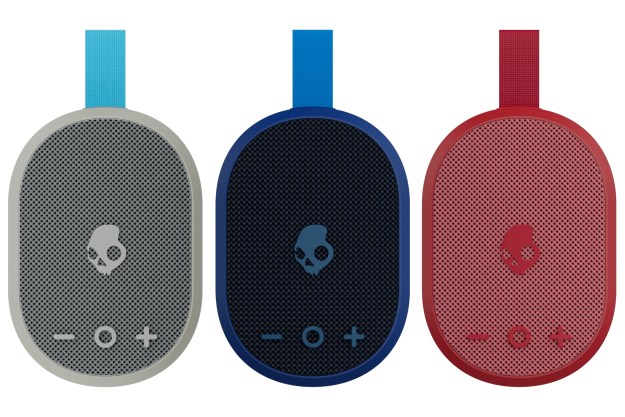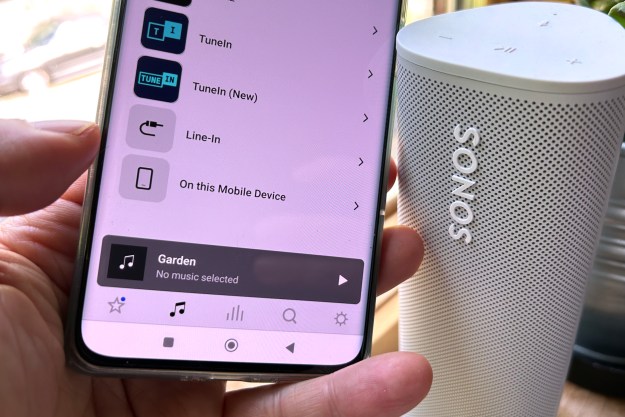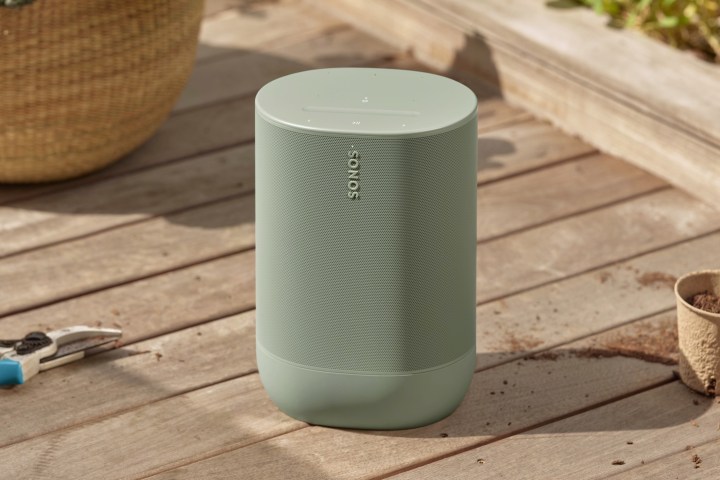
Sonos has unveiled the latest version of its Move portable smart speaker — the Move 2. It looks nearly identical to the original Sonos Move, yet contains several updates that bring it in line with the company’s recently released Era 100 and Era 300 speakers. The Move 2 has been priced at $449, a $50 increase over the previous model, and will be available starting September 20, 2023, in a wide selection of countries. The Move 2 replaces the first-gen speaker, though Sonos will continue to sell the original Move while inventory remains, so you may want to keep an eye open for some deep discounts.
At a distance, you can’t tell the Move and Move 2 apart, well, unless the Move 2 shows up in its new color option — olive. The Move 2 is a hair bigger, but it still weighs the same 6.61 pounds. Sonos has kept the same rubberized no-slip base as well as the integrated carry handle on the back. As with the original, the Move 2 is built for the outdoors with an IP56 rating for dust and water resistance.

However, if you look closer, some of the updates become visible. The
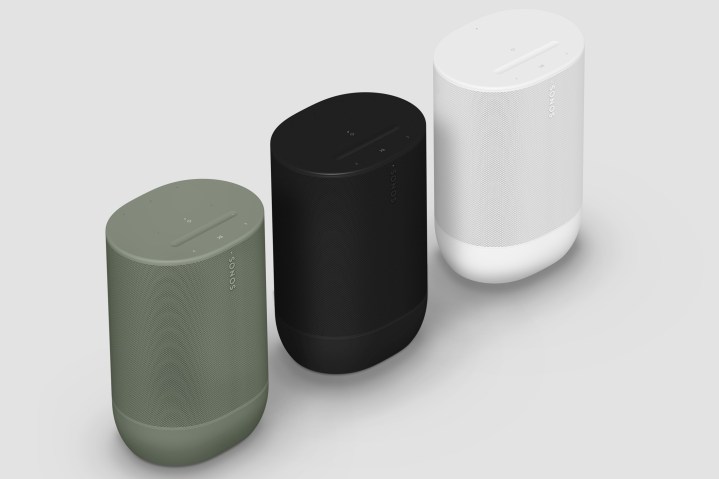
Under the exterior, there are now two angled tweeters plus a midwoofer — the same arrangement as the Era 100 — which gives the Move 2 the ability to produce stereo sound on its own. As with all
One of the Move’s best features — automatic Trueplay — is still on tap for the Move 2, letting the speaker recalibrate itself every time you change its location.
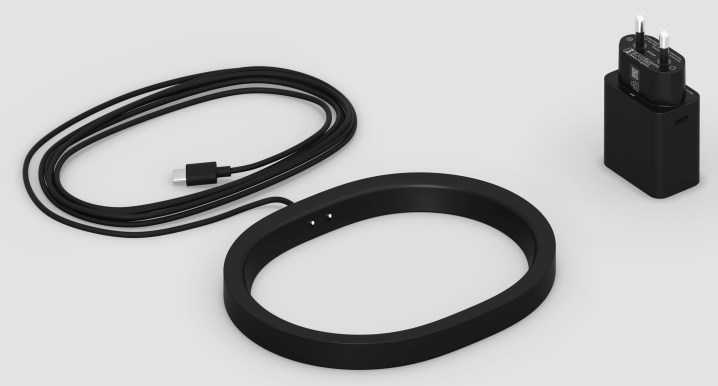
The USB-C port can be used to charge the speaker directly with a USB-C PD charger when not using the included wireless charging base. Speaking of the base, it’s also received a redesign. The AC adapter is now a separate part with a USB-C port and it connects to the base via a USB-C cable. As a bonus, it’s backward compatible with the original Move.

The Move 2’s USB-C port can also expand its capabilities, just like the new Era speakers. Using optional adapters, you can connect an analog source like a turntable, or a wired network connection to your router, something the original Move can’t do.
Overall, the Move 2 represents a nice upgrade over the original Move, but there’s one small thing Move owners will need to consider: As with the Era Series, the Move 2 isn’t currently compatible with Google Assistant. You’ll be able to run Amazon Alexa and Sonos Voice Control simultaneously, but Google’s AI is AWOL, and
Editors' Recommendations
- Klipsch takes on Marshall with three new portable and rugged Bluetooth speakers
- Anker Soundcore’s Motion X500 packs spatial audio into a more portable package
- Tivoli Audio’s Model Two Digital speaker abandons terrestrial radio
- JBL’s retro-style wireless speakers could spark serious envy among Sonos fans
- Six years in hell: My aging Sonos speakers have survived outside


